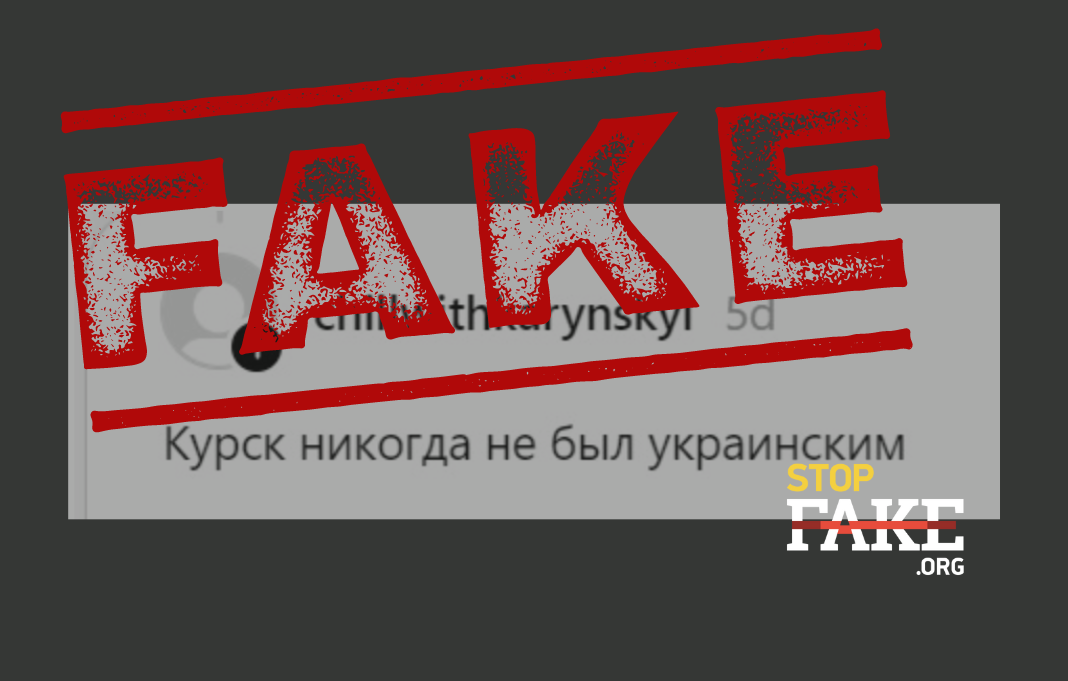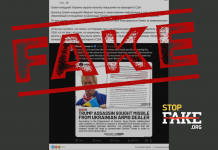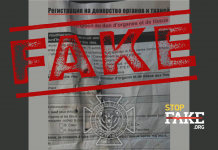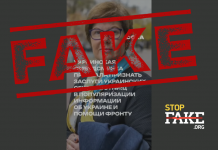Archaeological findings, historical documents, chronicles, and oral folklore prove that in different historical periods, Kursk and the Kursk region were Ukrainian. In January 2024, President of Ukraine Volodymyr Zelenskyy signed a decree «On the Territories of the Russian Federation Historically Inhabited by Ukrainians,» which mentions the Kursk region among other territories.
While monitoring social media, StopFake journalists came across a post on Threads in which a user with the nickname @chillwithkarynsky claimed that «Kursk has never belonged to Ukraine.»

The question «Whose Kursk?» arose not now, after the Ukrainian Armed Forces invaded the territory of the Russian Federation. For example, in the spring of this year, when the Russian liberation forces of the Armed Forces of Ukraine launched raids in the Belgorod and Kursk regions, Ukrainian publics and social media actively discussed the return of «the original Kyiv lands» back to Ukraine. Then the Kremlin’s propaganda, in its typical style, declared: «Kursk land has been and will be primordially Russian».
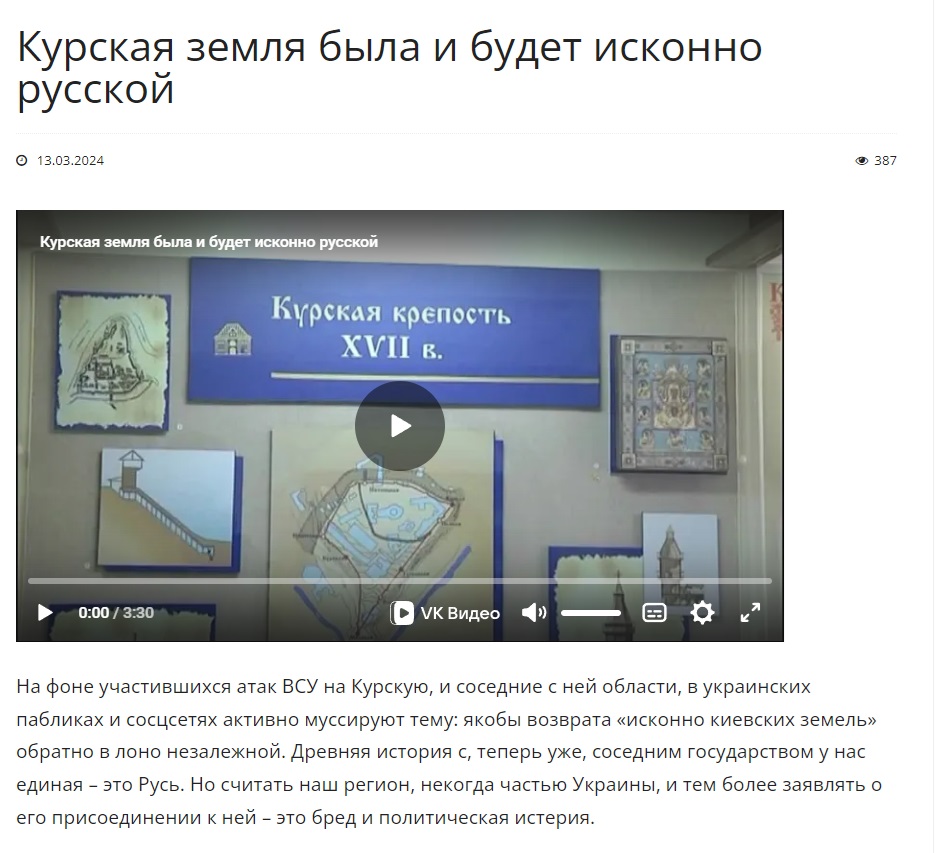
On August 6, 2024, the Armed Forces of Ukraine (AFU) crossed the Russian-Ukrainian border and began fighting in the Kursk region of the Russian Federation. Social media users began to draw parallels with the events of spring 2014, when «little green men» in unmarked uniforms occupied the Crimean peninsula, and the issue, which was popular at the time, has continued to be relevant: «Whose Kursk?»
In the spring of 2014, the Kremlin claimed that Crimea had always been part of Russia, and that its occupation and annexation simply corrected a temporary historical injustice.
However, unlike Russia, Ukraine does not use history as a pretext for conquering territory, and the Ukrainian authorities state that the strategic goal in the Russian-Ukrainian war is to return to the 1991 borders. According to Foreign Ministry spokesman Heorhiy Tykhyi, «Unlike Russia, Ukraine does not need other people’s property. Ukraine is not interested in taking territory in the Kursk region, we want to protect the lives of our people.»
But at the same time, Ukraine is not abandoning «the truth about Ukrainians, the truth about us and the truth about our history,» as Ukrainian President Volodymyr Zelenskyy said on Unity Day on January 22, 2024, when he signed a decree «On the Territories of the Russian Federation Historically Inhabited by Ukrainians.» President Zelensky noted that his goal is «to return the truth about the historical past for the sake of the Ukrainian future.» In the document, the Ukrainian president instructed the Cabinet of Ministers to develop an action plan to preserve the national identity of Ukrainians in the Russian Federation, including the lands historically inhabited by them, namely the Kuban, Starodubshchyna, Northern and Eastern Slobozhanshchyna within the modern Krasnodar Territory, Belgorod, Bryansk, Voronezh, Kursk, and Rostov regions of the Russian Federation.
President Zelenskyy noted that it is necessary to prepare and spread information in Ukraine and the world «about the more than thousand-year history of the Ukrainian state, the historical ties of the lands inhabited by ethnic Ukrainians with Ukrainian national state entities in different historical periods.»
The Encyclopedia of Modern Ukraine, a publication of the NASU Institute of Encyclopedic Research, has an article on Kursk. The authors note that at the end of the tenth century, Kurshchyna became part of Kievan Rus, and the city of Kursk was first mentioned in the «Life of St. Theodosius» in the Kyiv-Pechersk Patericon in connection with the events of the mid-1030s, when the Dnipro Left Bank returned to the rule of Yaroslav the Wise.
The next 1000 years are also full of events that prove that the history of the Kursk region is inextricably linked to the history of Ukraine. For example, in the article «Seven Interesting Facts about Kursk and the Kursk Region» historian Yevhen Buket writes that in the XI-XIII centuries, the Kursk principality was part of the Chernihiv-Siversk land. In 1164-1178, the famous hero of the Tale of Igor’s Campaign, Igor Sviatoslavych, who led a campaign against the Polovtsians in 1185, reigned in Kursk. In the fourteenth century, Kursk was part of the possessions of Kyivan Prince Volodymyr Olgerdovych, and in the List of Russian Far and Near Cities it is mentioned as a «Kyivan» city, Buket notes.
Part of the lands of the modern Kursk region was part of the Zaporozhian Army state. In particular, the city of Sudzha, which as of August 14, 2024, is under the control of the Armed Forces of Ukraine, was founded in the 17th century as a city of the Sumy Regiment.
Subsequently, the lands of the Kursk region inhabited by Ukrainians became part of the Sloboda Cossack regiments. Sudzha and its environs and many other lands north of Sumy and Kharkiv are marked as Ukrainian ethnic territories on the map of South Russian dialects compiled in 1871 by ethnographer and folklorist Pavlo Chubynsky.
Vitalii Skalskyi, a candidate of historical sciences, says that after the 1917 coup in Petrograd, a Ukrainian provincial council was established in the Kharkiv region, very close to Kursk, and Ukrainian newspapers began to be published. «The same thing happened wherever Ukrainians lived, where there were larger or smaller Ukrainian communities. Ukrainians in Kursk did not stand aside from national processes,» Skalsky writes.
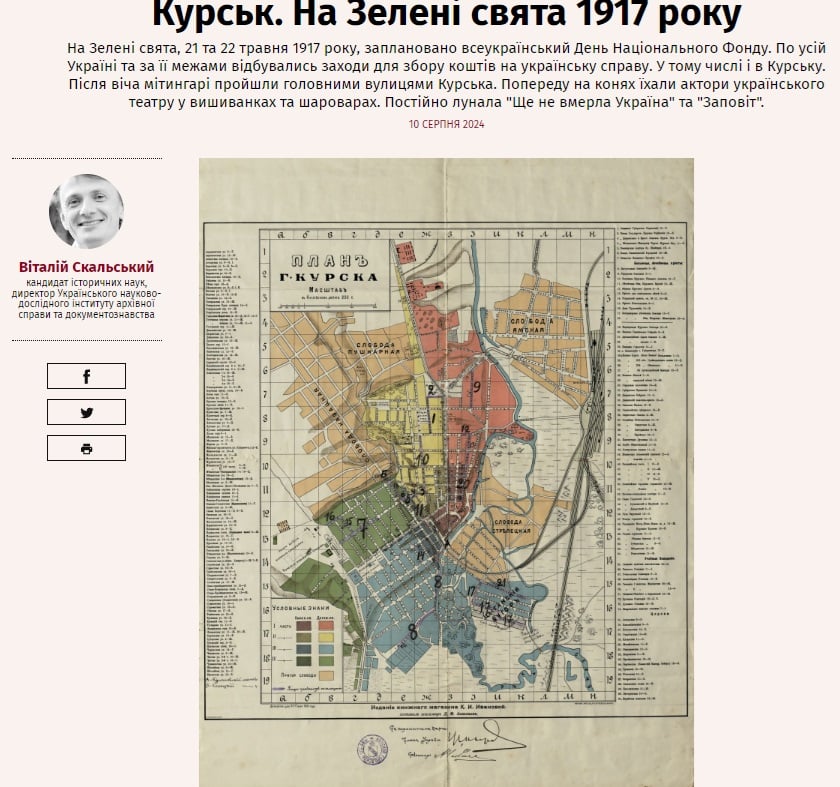
In the same year, 1917, residents of Suzha and the Suzhansky district swore an oath to the Ukrainian authorities, declared their secession from the Kursk province, and asked to be accepted into the Ukrainian People’s Republic. On August 14, 1918, a large part of the Kursk province of the former Russian Empire became part of the Ukrainian state. This resolution was one of the results of the Kyiv Peace Conference, which negotiated the legal outcome of the First Soviet-Ukrainian War, which was lost by the Bolsheviks. However, on November 28, 1918, the Bolsheviks launched another offensive against Ukraine and proclaimed a puppet «interim workers and peasants government of Ukraine» in Kursk. Already on November 29, Soviet Russia occupied the city of Sudzha, where its puppet government declared the overthrow of the Hetmanate, the restoration of Soviet rule, and called for the fight against the Directory. It also announced the abolition of all laws, orders, and agreements of both the Hetman and his government and the Central Rada.
«Thus, Suja and Rylsk found themselves back in Russia. But even so, in 1924-1925, Ukrainians in Sudzha independently initiated a broad process of returning their neighborhoods to Ukraine, and local village councils produced stamps in Ukrainian during the process of indigenization,» Buket recalls the events of those days.
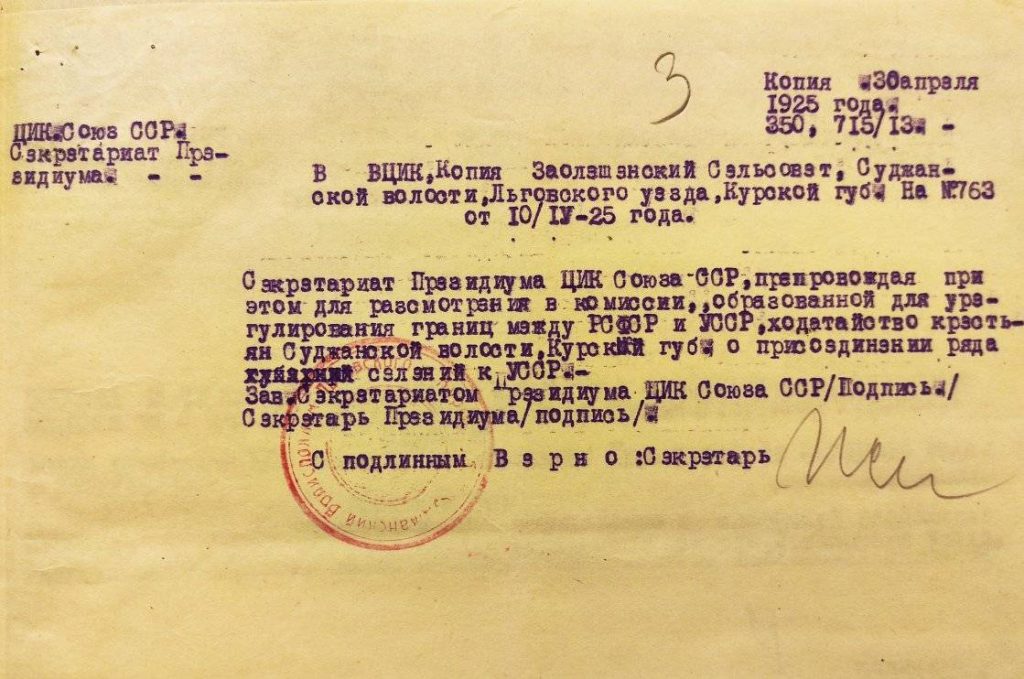
The Presidential Decree «On the Territories of the Russian Federation Historically Inhabited by Ukrainians» also contains, among other things, instructions to collect and study facts and evidence of crimes committed against Ukrainians in the Russian Federation. According to Radio Liberty, according to official Russian statistics, over the past 20 years, the number of Ukrainians in the Russian Federation has decreased by more than three times – from almost three million (2,942,974 in the 2002 census) to less than 900,000 (884,007 in the 2021 census). «It is difficult to explain this by anything other than a systematic policy of destroying the Ukrainian identity,» writes the author of the article, Dmytro Shurkhalo.
You can read more about how the Kremlin uses history in its propaganda in the article by StopFake journalist Oksana Poluliakh.


